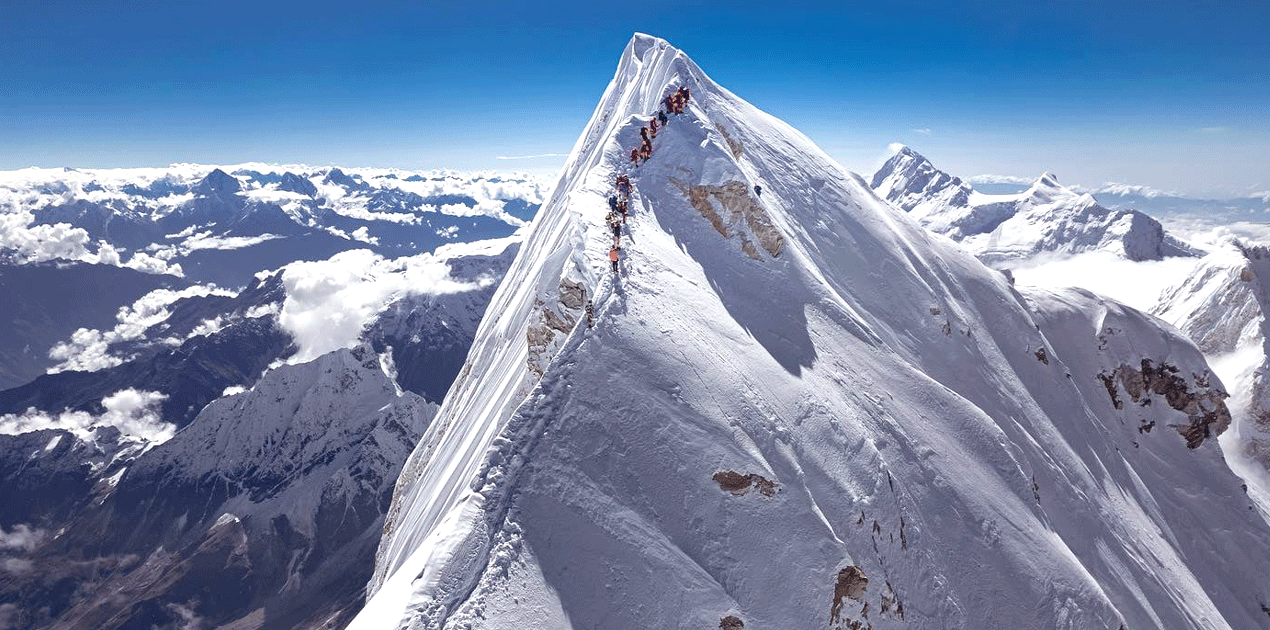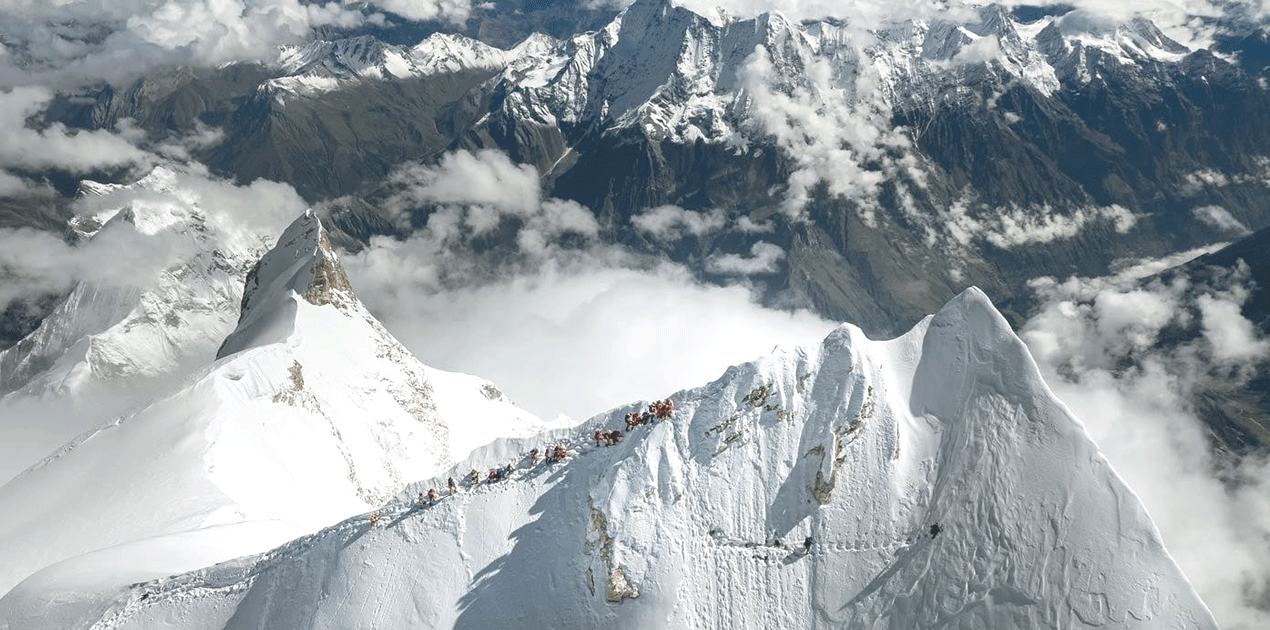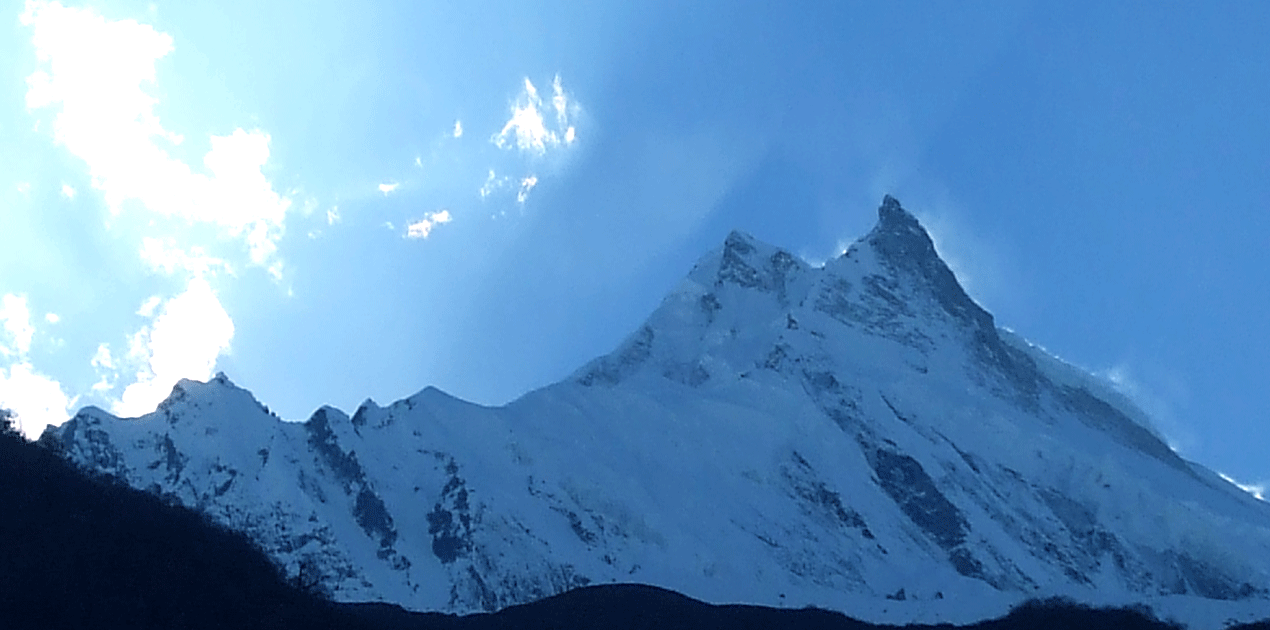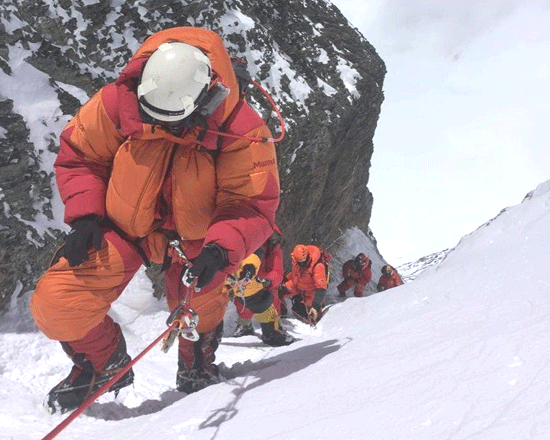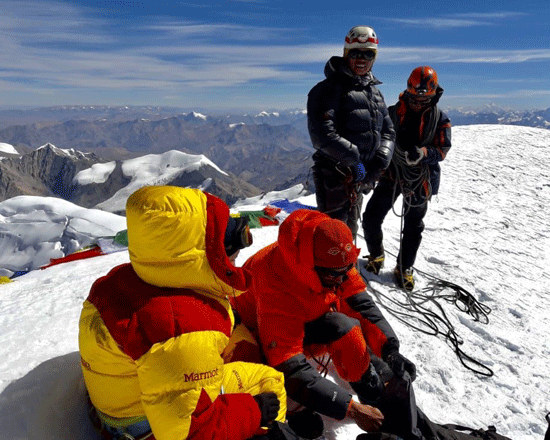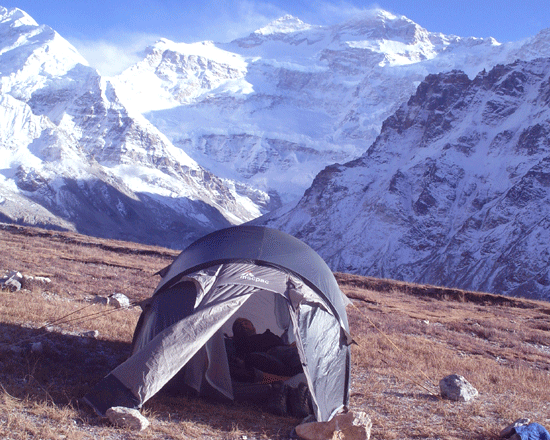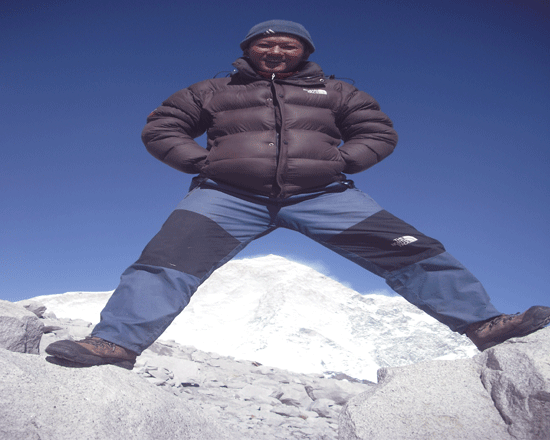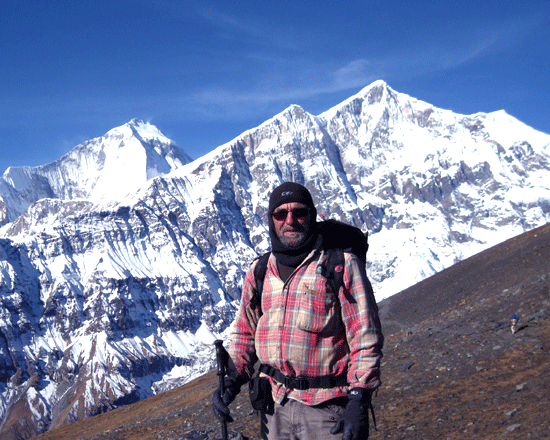Manaslu Expedition
Manaslu Expedition
High mountain expeditionsTrip Facts
These treks are suitable for any walker looking for something a little more challenging and energetic. They are a combination of some longer and shorter walks and hill-walking experience is desirable. The duration is usually from 10 to 15 days. Following the up and down terrain of Nepal and walking to higher elevations contrasts these treks to those in the easy classification. However, you will be rewarded for your efforts with spectacular close-up views of glaciers and of the high Himalayas. Although the terrain is not difficult, some vigorous hiking experience is useful. There may be up to 6 hours a day on the trail and the elevation rises and falls from 800m/ 2624ft to 4000m/13210ft above sea level.
100%
Overview
Manaslu Expedition
The Manaslu Expedition presents a formidable challenge, even for seasoned mountaineers. Renowned for its technical difficulty, this climb demands exceptional physical fitness, advanced mountaineering skills, and prior experience at high altitudes.
Ascending the summit of Manaslu entails navigating steep snow and ice slopes, tackling sections of technical rock climbing, and traversing a treacherous knife-edge ridge. Climbers must also negotiate multiple crevasses and navigate areas prone to avalanches. The altitude, weather conditions, and environmental factors further amplify the complexity of the climb.
Successful completion of the Manaslu summit requires unwavering physical fitness and stamina to endure weeks of rigorous trekking and climbing in extreme altitudes. Proper acclimatization is paramount to ward off altitude sickness and other potential health complications.
History
Nestled in the ridges of Mansiri Himal in Nepal’s Gorkha District, Mount Manaslu Expedition stands as the eighth-highest peak in the world. This climbable wonder reaches an impressive altitude of 8,163 meters within the awe-inspiring Manaslu Himal. As climbers ascend, they encounter moderately angled snow slopes on the North-East Face before tackling a steep snow arc that leads to the summit.
Manaslu, standing at 8,163 meters (26,781 feet), was first summited on May 9, 1956, by a Japanese team led by Toshio Imanishi and Gyalzen Norbu Sherpa. They achieved the historic first ascent of Manaslu Climbing Expedition. The climb was notable for its difficulty and the high level of skill required. Presently, numerous routes present climbers with opportunities to conquer this majestic peak. The Manaslu Expedition offers an unforgettable experience, characterized by a blend of challenging technical sections and captivating surroundings.
For those seeking a more accessible eight-thousander, Mount Manaslu proves an excellent choice. While boasting considerable altitude, it evokes a less daunting atmosphere compared to peaks like Kanchenjunga or Everest. Considering the favorable success rates of Manaslu ascents, climbers stand a strong chance of reaching the summit.
Typically spanning six weeks, the Manaslu Expedition encompasses a trek to Manaslu Base Camp at 4,400 meters. The trekking route remains relatively pristine, offering a remarkable experience in its own right. Climbing conditions on par with peaks such as Cho Oyu (8,188 meters) or Shishapangma (8,027 meters) further affirm the challenges of conquering Manaslu. It serves as an enriching climb, preparing mountaineers for the complexities of scaling a serious 8,000-meter mountain.
Cultural Significance
The mountain is considered sacred by the local Tibetan Buddhists, and it is often referred to as the “Mountain of the Spirit.” The surrounding region, known as the Manaslu Circuit, is culturally rich, with many traditional Tibetan Buddhist villages and monasteries. The Tsum valley near the Manaslu valley indicates the historic cultural values inhabited for centuries by Tibetan-descended communities, primarily the Tsumba people. The valley is known for its ancient villages and traditional ways of life that have been preserved over time. The cultural, people and their way of living are similar.
- Local Communities: The Manaslu region is home to several ethnic groups, including the Gurung and Tibetan-descended communities. The trek allows for immersion in their unique cultures, traditions, and daily lives. You can visit traditional villages, monasteries, and ancient cultural sites.
- Religious Sites: The region is dotted with Buddhist monasteries, stupas, and prayer flags, reflecting the deep spiritual and cultural heritage of the area. Key sites include the monasteries in Samagaon and the Tibetan-influenced architecture and practices observed throughout the trek.
- Cultural Preservation: Trekking in the Manaslu region contributes to the preservation of local cultures and traditions by promoting sustainable tourism and respecting the cultural practices of the local communities.
Challenging path of Manaslu expedition
The Manaslu Expedition poses a high level of difficulty, necessitating meticulous preparation, rigorous training, and substantial experience to conquer this formidable summit.
Novice climbers or those with limited mountaineering experience are advised against attempting Manaslu. Prior expertise in technical climbs and high-altitude expeditions is essential before undertaking this formidable peak. Climbing under the guidance of an experienced team and knowledgeable guide is strongly recommended to ensure safety and receive the necessary support.
Begin of the Manaslu expedition
Manaslu Expeditions’ trip begins from lower Manaslu valley Besisahar- Dharapani a day-long drive from Kathmandu. It lasts for 39 days. Gather the team members for the expedition briefing, prepare the paperwork, and complete the preparations. Climbers will have spectacular experiences and be able to admire the scenic, lush landscapes of Nepal along the way. The route follows the Budhi Gandaki River after the summit. After a few days’ hike, we will be in Sama Gaon, a strikingly picturesque village of farmers and traders on the main trail of the Manaslu circuit trekking. There is also a Buddhist monastery there. A day of acclimatization is planned in the village before heading to the Manaslu Base Camp.
Best time to climb the Manaslu Himal
The best time to climb Manaslu Himal is during the spring and autumn seasons, which are generally considered the most favorable for mountaineering in the Himalayas. The climbing season for Manaslu typically runs from mid-March to May in the spring, and from September to November in the autumn.
During these seasons, the weather is generally stable, with clear skies, low precipitation, and mild temperatures, which provide favorable climbing conditions. The autumn season is often preferred by climbers due to the relatively stable weather patterns and clear views, which offer better visibility of the stunning Himalayan scenery.
During the spring season, the temperatures can be colder, especially at higher altitudes, and there may be occasional snowfall or storms. However, the spring season is generally less crowded than the autumn season, which can be an advantage for climbers seeking more peaceful climbing experience.
It is important to note that climbing Manaslu in the winter and monsoon seasons is generally not recommended due to the harsh weather conditions, heavy snowfall, and increased risks of avalanches and other hazards. Climbers should also be aware of the potential risks associated with the changing weather patterns in the Himalayas and be prepared for unexpected weather changes.
Cost of Manaslu Expedition
Manaslu expedition packages cost USD D 14500 per person which includes the permit cost for Manaslu expedition. We might be able to offer you a good deal if there are more than 10 people. We at Nepal Wilderness Trekking Pvt never compromise on expedition services despite compromising on costs. Expert climbing guides are available, as well as highlanders’ support for all highlanders’ climbing.
The Manaslu Expedition highlights climbing
The Manaslu Expedition is a challenging climbing adventure that involves summiting Mount Manaslu, the eighth-highest mountain in the world. Manaslu is located in the Himalayas of Nepal, and the climb requires technical mountaineering skills and experience. Here are some things you should know if you’re planning a Manaslu Expedition:
- Permits: You will need to obtain a climbing permit from the Nepal Mountaineering Association (NMA) to climb Manaslu. The permit fee varies depending on the season and the size of the climbing team.
- Logistics: Manaslu is located in a remote region of Nepal, and reaching the mountain involves a long trek to the base camp. You will need to arrange for transportation, guides, porters, and other logistics to reach the mountain.
- Climbing Season: The best time to climb Manaslu is during the spring (April-May) and fall (October-November) seasons, when the weather is stable and the skies are clear.
- Climbing Route: There are several routes to climb Manaslu, but the most popular route is the Northeast Ridge. The climb involves steep snow and ice slopes, and some technical rock climbing sections.
- Physical Fitness: Climbing Manaslu requires excellent physical fitness and stamina, as well as strong mountaineering skills. You should be prepared to spend several weeks at high altitudes and endure harsh weather and environmental conditions.
- Safety: Climbing any Himalayan peak involves risks, and safety should always be a top priority. You should climb with an experienced guide and team and have the proper equipment and training to handle any emergencies that may arise.
Historic Records
-
- 1956: The first successful ascent was made by a Japanese team, marking the beginning of Manaslu’s climbing history.
- 1970s–1980s: During this period, the number of successful ascents was relatively low, with only a few climbers reaching the summit each year.
- 1990s–2000s: Interest in Manaslu increased, leading to more attempts and successful climbs. The annual number of successful ascents started to rise during this time.
- 2010s: In the early 2010s, there was a noticeable increase in the number of successful summits. For example, in 2011, approximately 100 climbers reached the summit.
- 2020s: The number of successful ascents fluctuated due to factors like changing weather patterns and global events like the COVID-19 pandemic. However, in a typical year, around 100–150 climbers successfully reach the summit.
Recent Statistics
- 2019: The year saw a peak with around 130 successful summits.
- 2020: The number of climbs was impacted significantly by the pandemic, with many expeditions being canceled or postponed.
- 2021–2023: The trend has been toward more climbers attempting the ascent, with numbers reaching approximately 100–150 successful summits annually.
Overall, a Manaslu Expedition can be a challenging and rewarding experience for experienced mountaineers seeking to climb one of the highest peaks in the world. However, it is important to be well-prepared and to approach the climb with caution and respect for the mountain and the environment.
Detail Itinerary
- Day 01: Arrival in Kathmandu and transfer to the hotel
- Day 02: Rest in Kathmandu, Expedition briefings and preparations
- Day 03: Drive from Kathmandu to Besisahar (760 meters)
- Day 04: Trek from Besisahar to Dharapani (1,860 km)
- Day 05: Dharapani to Tilije (2300 m)
- Day 06: Trek from Tilije to Bhimthang (3,720 meters)
- Day 07: Acclimatization in Bhimthang (rest day)
- Day 08: From Bhimthan to Samdo (3,872m) via Larke Pass (5,160m)
- Day 09: Hike to Sama Gaun (3,541m)
- Day 10: Trekking from Sama Gaun to Manaslu Basecamp (4700m)
- Day 11-Day 32: Climbing Period [Base Camp to Manaslu Summit (8,163m) - Base Camp]
- Day 33: Trekking from Manaslu Base Camp to Sama Gaun (3,541m)
- Day 34: Trek from Sama Gaun to Namrung (2,670m) and Arughat (Heli) if requested.
- Day 35: Trek from Namrung to Philim (1,606 m)
- Day 36: Trekking from Philim to Machha Khola (883m)
- Day 37: Drive from Machhakhola to Arughat - Kathmandu & transfer to the Hotel
- Day 38: Leisure Day in Kathmandu
- Day 39: Transfer to International Airport for final departure
Cost Included
- Airport pick-up and drop-off.
- B/B hotel accommodation in Kathmandu on a standard plan
- Transport from Kathmandu to Dharapani and to Arughat to Kathmandu.
- Sherpa guide for Manaslu Expedition.
- Mount Manaslu Expeditions Group climbing gear, such as ropes and ice bars.
- Mount Manaslu expedition permits.
- ACAP and MCAP permits
- Meal for high altitude (Full board).
- The expenses and insurance for the liaison officer (Govt. of Nepal).
- Expedition managers, cooks, support crews, and porters, as well as their equipment, daily wages, food, and insurance.
- Camping and kitchen equipment such as base camp tents, dining tents with tables and chairs, kitchen tents with all utensils, and toilet tents.
- High altitude tents and necessary gear like EPI gas and a burner.
- The Nepali staff, including porters, are provided with warm clothing and trek gear.
- Nepali staff and porters are covered by life and medical insurance.
- In case of emergency, a satellite phone and a walkie-talkie can be used (Payment required).
- While on Mount Manaslu Expeditions, emergency oxygen with a regulator and mask
- The agency service charge
- Farewell dinner in the Nepali culture restaurant
Cost Excluded
- Airfare to international destinations
- Visa fees for Nepal
- High-risk medical and personal insurance.
- Lunch and dinner in Kathmandu
- Bills for Bar & Beverage
- Personal equipment and climbing gear.
- Evacuation during an emergency
- Manaslu base camp staff bonuses, tips, and personal expenses.
- During the Manaslu expedition, there are permit fees and customs charges for the use of a sat phone, communication gadget, and commercial filming.
- The deposit fee and the garbage deposit of USD 3,000.00 (shared by the total number of climbers) will not be refunded if the climbers do not return their garbage to Kathmandu.
- (USD 1000 recommended) Successful Climbing Bonus for the Sherpa

